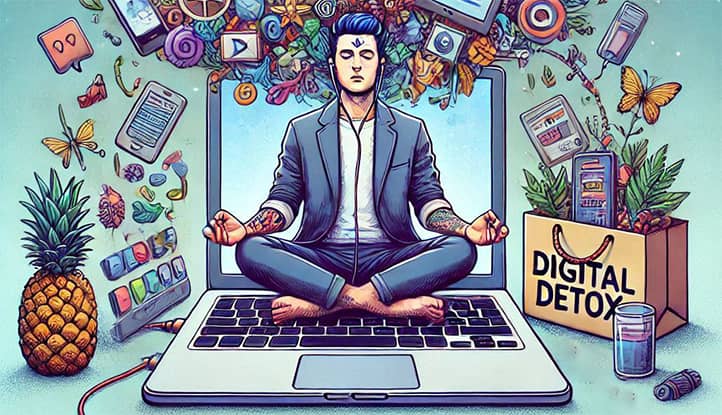Digital technologies have become an integral part of our lives, making them more comfortable, faster, and productive. Smartphones, tablets, laptops, and other gadgets provide instant access to information, unlocking limitless opportunities for communication, learning, and work. We can easily stay updated on global news, keep in touch with loved ones even if they live thousands of kilometers away, and develop professionally through online courses and tools.
However, along with numerous advantages, excessive use of digital technologies has given rise to several problems that negatively affect our mental and physical health. Constant online presence creates a sense of information overload.
Daily notifications compel us to “stay in the loop,” but at the same time, they cause emotional exhaustion. Many people face what is called information noise, which prevents them from concentrating on important things, leading to irritation and heightened anxiety.
Dependence on gadgets and social media has become another widespread issue. We often don’t even notice how much time we spend glued to our smartphones, endlessly scrolling through news feeds. This can lead to feelings of guilt for wasting time, especially when tasks remain unfinished. Moreover, constant exposure to screens affects sleep quality: blue light from devices disrupts our biological rhythms, and endless content scrolling before bed prevents the brain from resting.
Such a lifestyle often results in emotional burnout. A person loses energy, motivation, and the ability to enjoy simple things. At the same time, the desire to always be online and not miss anything important leads to the so-called FOMO syndrome — the fear of missing out on significant events. This only intensifies stress and dependency, creating a vicious cycle.
Digital technologies are a part of our reality, but they also require a mindful approach to their use. This is why the topic of digital detox is becoming increasingly relevant, as it helps to find a balance between the advantages of technology and caring for one’s mental health.
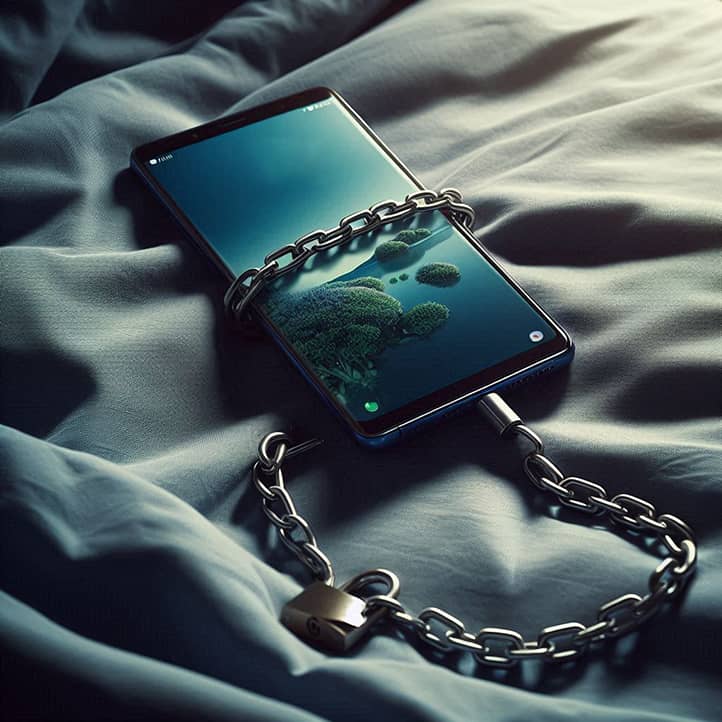
What is digital detox?
Digital detox is a conscious and temporary limitation or complete refusal to use social media and digital devices such as smartphones, tablets, and laptops in order to restore balance between real life and the online environment. It’s a practice that allows people to disconnect from the constant flow of information, focus on their feelings, regain emotional equilibrium, and improve their quality of life. In today’s world, where gadgets have become an integral part of daily existence, digital detox serves as an essential tool for maintaining mental and physical health.
This approach does not imply eliminating technology from life forever. Instead, it’s an opportunity to rethink one’s relationship with the digital environment, learn to manage screen time, and reduce dependence on gadgets. Digital detox allows individuals to return to the basics — live communication, physical activity, attention to personal needs, and connection with the surrounding nature.
Today, when multitasking and the speed of information exchange have become the norm, digital detox is not a luxury but a necessity. It helps people pause, take a break, and rethink their priorities. This process positively impacts the brain, reducing stress levels, improving focus, and enhancing emotional resilience.
In a literal sense, digital detox can be compared to rebooting a system. By limiting excessive screen usage, people give their brains a chance to rest, relieve their attention from the constant stream of messages and notifications, and find new sources of satisfaction that do not depend on technology.
Goals and benefits of digital detox
The goal of digital detox is to create conditions for restoring physical, emotional, and social well-being, reducing the impact of information noise, freeing up time for personal matters, and improving the quality of interactions with others.
One of the key benefits of digital detox is improved mental health. Constant attachment to screens leads to higher stress levels, anxiety, and emotional exhaustion. Detox practices provide an opportunity to “unload” the brain, reduce anxiety, and enhance overall well-being.
Another significant advantage is improved concentration. In a digital environment, we constantly switch between tasks, which significantly diminishes our ability to focus on one thing. Digital detox helps regain control over attention, increasing productivity and efficiency in completing tasks.
In addition, digital detox positively affects physical health. Reducing screen time lowers risks associated with a sedentary lifestyle, improves sleep quality, and reduces eye strain.
Equally important is the restoration of meaningful relationships. When people spend less time on social media and engage more in face-to-face interactions, relationships with family, friends, and colleagues improve. This fosters emotional closeness, which cannot be achieved through screens.
Thus, digital detox is not just a way to cope with gadget dependency but also a path to harmony, where technology takes its rightful place without dominating reality.
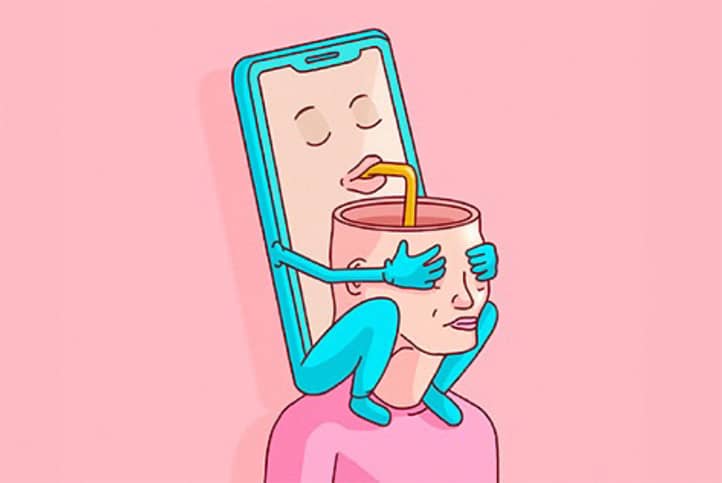
Signs You Need a Digital Detox
Many people don’t even realize that their constant attachment to phones, tablets, or laptops negatively impacts their health, productivity, and emotional well-being. If you notice certain changes in your behavior, mood, or state of mind, it may be a signal that it’s time to consider a digital detox.
The use of gadgets itself is not the problem. They are designed to make our lives easier, but their excessive use can have the opposite effect: instead of saving time, you feel a constant shortage of it, and instead of pleasure, you experience emotional exhaustion. It’s important to recognize the warning signs that indicate you need a break from digital technologies.
So, if you notice that your gadgets have become a source of stress, affect your sleep, or hinder your ability to focus on important tasks, it’s a clear indicator that it’s time to rethink your habits.
Constant Desire to Check Your Phone
If you can’t go a few minutes without checking your phone, even when there are no new notifications, it may be a sign of internet addiction. A constant urge to scroll through news feeds, check messages, or refresh social media pages can indicate a disruption in your ability to concentrate. You seem to be in a state of waiting, where any notification or message feels important, even though it offers no real value.
This cycle leads to excessive information consumption, which is not only unhelpful but often causes feelings of overload. Constantly checking your phone forms a habit that prevents you from enjoying the moment, conversations with loved ones, or even simple relaxation.
Decreased Productivity Due to Social Media
Have you ever opened Instagram or TikTok for a short break and then realized that several hours have passed? Social media platforms are designed to keep your attention for as long as possible. But they often lead to decreased productivity as they distract you from important tasks.
Instead of focusing on work or study, you end up spending time consuming content that rarely provides real benefit. This leads to feelings of incompleteness and even guilt over wasted time. Moreover, constant switching between work tasks and social media disrupts your ability to concentrate, making you less effective.
Sleep Problems Due to Gadget Use
If your evening ends with scrolling through news feeds or watching videos, and your morning wake-up becomes more difficult, this is a clear signal that gadgets are affecting your sleep. The blue light from screens suppresses melatonin production—the hormone responsible for healthy sleep. As a result, your body receives a signal to stay active even when you should be resting.
Moreover, the content you consume before bed often triggers emotional reactions—such as anxiety from news or envy towards others’ “perfect lives” on social media. All of this prevents your brain from relaxing and preparing for rest. As a result, you experience chronic fatigue and lower energy levels throughout the day.
Feelings of Anxiety or Irritability Without the Internet
If you feel restless or irritable when you don’t have access to the internet, this is a serious signal. Situations where you lack Wi-Fi or your phone is low on battery can cause excessive worry, as if you’re missing something important. Such a reaction indicates a strong emotional dependency on the digital environment.
Instead of enjoying reality, you constantly think about what is happening online. This creates additional stress and negatively impacts your overall mental state.
Recognizing these signs can be the first step toward change. A digital detox can help restore balance, reduce the influence of gadgets on your life, and give you back control over your time and attention.

Preparing for a Digital Detox
Before embarking on a digital detox, it’s important to prepare properly for the process. It’s not just a spontaneous decision to “put down your phone,” but a thoughtful approach that will help make the detox effective and comfortable.
Many people find that even after several hours without gadgets, they feel anxious or don’t know what to do. Therefore, the key to a successful digital detox is careful preparation that allows you to become aware of your habits, set specific goals, and plan how to fill the time previously spent on screens.
Preparation involves three main steps: analyzing your time, defining goals, and planning alternative activities. These steps help you understand how gadgets are affecting your life, which aspects you want to improve, and how to avoid the feeling of “emptiness” when you decide to limit digital device use for a period. This approach not only makes the detox process more mindful but also increases the likelihood of success.
Analyzing Time Spent on Gadgets
The first step in preparing is analyzing your screen time. Very often, we don’t even realize how many hours we spend each day with gadgets. Smartphones and tablets have built-in features for monitoring screen time that help you get a clear picture of where your day is going.
You can use built-in tools like Screen Time on iOS or Digital Wellbeing on Android. These apps show how much time you spend on social media, watching videos, playing games, or using other apps. You can also download special apps like RescueTime or Moment, which provide a more detailed analysis of your activity.
After collecting the data, pay attention to the apps or activities that take up the most time. Are they really necessary? Do they bring any benefits, or are they just distractions? This will help you understand what aspects to change and make your gadgets less “attractive” for frequent use.
Defining Goals: What Do You Want to Achieve with the Detox?
The second step in preparation is clearly defining your goals. Why have you decided to do a digital detox? The answer to this question is crucial, as understanding your motivation will help you stay on track even when it gets difficult.
Goals can vary depending on your needs. For example:
- Reduce stress caused by constant notifications.
- Improve sleep quality by avoiding gadget use before bed.
- Reclaim time for hobbies, reading, or sports.
- Restore closeness in relationships by spending more offline time with family.
- Increase productivity by freeing up time from social media for important tasks.
Once you have defined your goals, write them down. This will help you constantly remember why you decided to start the digital detox. The goals should be specific, measurable, and realistic. For example, instead of the general goal of “using my phone less,” set a task like “reduce time on social media to 1 hour per day.”
Planning Activities Without Gadgets
One of the main challenges of a digital detox is the question: “What will I do without my phone or computer?” To avoid the feeling of emptiness or boredom, it’s essential to plan in advance how you’ll fill this time.
Think about activities that bring you joy and satisfaction. For example:
- Physical activity: Outdoor walks, sports, or yoga.
- Hobbies: Reading, painting, playing musical instruments, cooking.
- Socializing: Meeting friends, family evenings, playing with children.
- Mindfulness practices: Relaxation, meditation or breathing exercises to help you relax and focus on the present moment.
- Learning: Mastering new skills like a foreign language or handicrafts, replacing aimless scrolling with a productive activity.
Make a list of activities and keep it handy. When the urge to pick up your phone arises, simply choose one of the options from the list.
Such planning will help you avoid a “digital vacuum” and enjoy the time spent without gadgets. It will also help you realize how many opportunities for a fulfilling and rich life open up when you rely less on technology.
Proper preparation for a digital detox is half the success. Analyzing your screen time, defining clear goals, and planning alternative activities will make the process mindful, effective, and even enjoyable. Not only will you restore balance in your life, but you’ll also discover new sources of joy and energy.
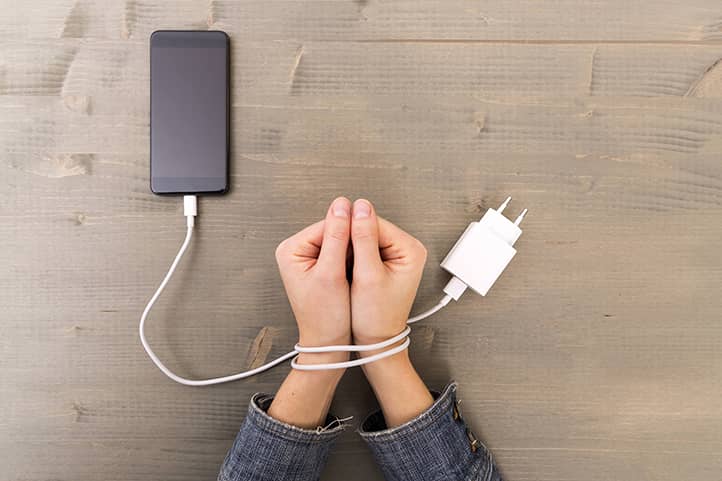
Step-by-Step Guide to a Digital Detox
If you approach a digital detox without a system, you might quickly give up due to discomfort or even anxiety. Instead, by following a clear step-by-step guide, you can effectively integrate it into your life without feeling a sharp break from technology.
The key to a successful detox lies in gradual changes and creating favorable conditions to reduce dependence on gadgets. This doesn’t mean complete isolation from the digital world but rather implementing helpful habits that will help balance technology use.
Step 1: Limit Smartphone Usage
The first and most important step is realizing how much time you spend on gadgets and gradually reducing that time. To do this, you can use special tools that monitor screen time. Set timers or limits for apps that take up the most of your time (e.g., social media, games, or streaming platforms).
Built-in features like Screen Time on iOS or Digital Wellbeing on Android can be helpful. These tools allow you to set limits for specific apps or even block them after a set amount of time. For example, you can limit Instagram usage to 30 minutes a day or completely block it in the evening hours.
Another useful approach is creating clear “windows” for gadget use. For example, check your phone only at designated times: in the morning before work or in the evening after finishing your tasks. Setting such boundaries helps avoid mindless scrolling.
Step 2: Set “Screen-Free Hours” or “Device-Free Days”
To successfully integrate a digital detox into your life, it’s important to define specific times when you will completely avoid gadgets. These can be specific hours during the day or even whole days when you won’t use your phone, tablet, or computer at all.
For example, set a rule: no gadgets after 8 PM. This will allow you to spend the evening in a calmer, more relaxed atmosphere, preparing for sleep. Another option is to implement “digital weekends,” where you put away all devices and spend time with loved ones, pursue hobbies, or travel.
Time away from screens will help you realize how many moments you miss due to constant gadget use and allow you to enjoy real life.
Step 3: Turn Off Unnecessary Notifications
Notifications are one of the main triggers that make us grab our phones repeatedly. To reduce this impact, try turning off all notifications that aren’t really important.
Keep only those related to genuinely essential matters, such as calls or messages from close people. Notifications from social media, news apps, or games can be completely turned off. This will help you become less distracted and stay focused on important tasks.
Additionally, turning off sound and vibration alerts can help reduce stress and avoid the constant feeling that you need to react immediately to every notification.
Step 4: Create Gadget-Free Zones in Your Home
To make the digital detox more effective, it’s important to create physical spaces where gadget use is prohibited. These “gadget-free zones” could include:
- The bedroom: Avoid using your phone before sleep, replacing it with a book or meditation.
- The kitchen: Focus on the taste of food and conversations with loved ones during meals.
- The living room: Use this space for conversations, games, or watching movies together, but without constantly checking your phone.
It’s important to agree with family members in advance to ensure everyone follows these rules. This will help create a warmer, emotionally fulfilling atmosphere at home.
Step 5: Find Alternatives
A digital detox will only be successful if you replace screen time with something useful or enjoyable. Think about activities you like but didn’t have time for before. These could be:
- Reading books: An engaging novel or a personal development book is a great alternative to aimless scrolling on social media.
- Outdoor walks: They improve your mood, energize you, and reduce stress levels.
- Hobbies: Drawing, cooking, playing musical instruments—these activities allow you to relax and discover new sources of joy.
- Live communication: Meeting friends or family will strengthen connections and provide support.
Prepare a list of alternative activities in advance so that you always have something to do when the urge to pick up your phone arises.
Step 6: Practice Mindfulness and Relaxation Techniques
One of the key elements of a digital detox is developing mindfulness and the ability to stay in the present moment. Mindfulness techniques like meditation, breathing exercises, or simple awareness of the world around you help reduce stress and improve emotional well-being.
For example, practice “Box Breathing“: inhale for a count of four, hold your breath for four, exhale for four, and hold again. This will help calm your nervous system and relieve the tension associated with the habit of constantly checking your phone.
Additionally, relaxation techniques like progressive muscle relaxation or yoga can reduce the physical and mental stress caused by digital overload.
By following this step-by-step guide, you can not only reduce dependence on gadgets but also discover new sources of joy and inspiration. A digital detox is an opportunity to regain balance in your life and focus on what truly matters.
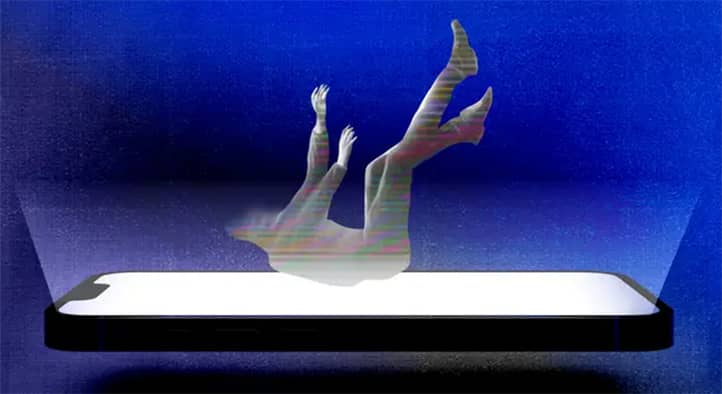
How to Avoid Returning to Digital Dependency
After successfully completing a digital detox, you may be tempted to revert to old habits and once again immerse yourself in mindless gadget use. To avoid this, it’s important to reinforce new healthy habits, develop mindfulness in technology use, and set clear boundaries in your interaction with the digital world.
Typically, the return to digital dependency happens gradually: first, you start checking your phone more often than needed, then you postpone other tasks in favor of social media or videos, and eventually, you feel “tied” to the screen again. To prevent this, it’s essential to implement a system of long-term rules, practice digital minimalism, and periodically schedule tech breaks.
Below are three key approaches that will help you avoid returning to digital dependency and maintain a balance in your technology use.
Establish Long-Term Device Usage Rules
To remain free from digital dependency, you need to establish clear rules for using gadgets. These rules should be realistic and align with your needs and lifestyle.
For example, set time limits for using gadgets. This might be a rule like “no more than 2 hours a day for social media” or “no gadgets after 9 PM.” Clear boundaries will help you avoid mindless procrastination and maintain control over your time.
It’s also important to define priorities: what you’re willing to spend time on in the digital space. For instance, you might allow yourself to use gadgets only for learning, work, or useful content, limiting entertainment and mindless scrolling.
Another effective strategy is to create “screen etiquette rules” for the entire family. For example, a shared rule of “no phones at the dinner table” will encourage live conversations and strengthen relationships.
Develop Digital Minimalism
Digital minimalism is a mindful approach to using technology that focuses solely on what brings real value and benefit. It doesn’t mean completely rejecting gadgets, but it helps avoid information overload and distractions.
Start by reviewing your digital environment. Delete any apps that don’t bring value or those that consume too much of your time. For instance, if you notice you’re constantly checking news feeds or social media, consider deleting or limiting access to them.
Next, organize your digital space. Prioritize apps and resources: keep only those that truly contribute to your goals, such as educational platforms, calendars, or work tools. A minimalist approach reduces informational noise and helps you focus on what’s important.
It’s also essential to avoid multitasking: instead of watching videos, replying to messages, and checking email all at once, focus on one task. This will increase your productivity and reduce stress.
Regular “Tech Breaks”
Even after completing the main phase of your digital detox, it’s beneficial to periodically schedule days or hours without gadgets to maintain balance and prevent returning to the habit of being constantly online.
“Tech breaks” can be planned: for example, every weekend or one day a week. During these periods, you completely put away all gadgets and dedicate time to live conversations, walks, hobbies, or other activities that bring you joy. You can also introduce shorter tech breaks during the day.
To enhance the effect of tech breaks, you can create a physical barrier—such as leaving your phone in another room or turning off the internet. This will help you resist temptation and use the time productively.
By following these approaches, you can avoid returning to digital dependency and maintain harmony between technology and real life. Remember: the best way to avoid dependency is through conscious control and responsible use of gadgets. Technology should serve you, not control your life.
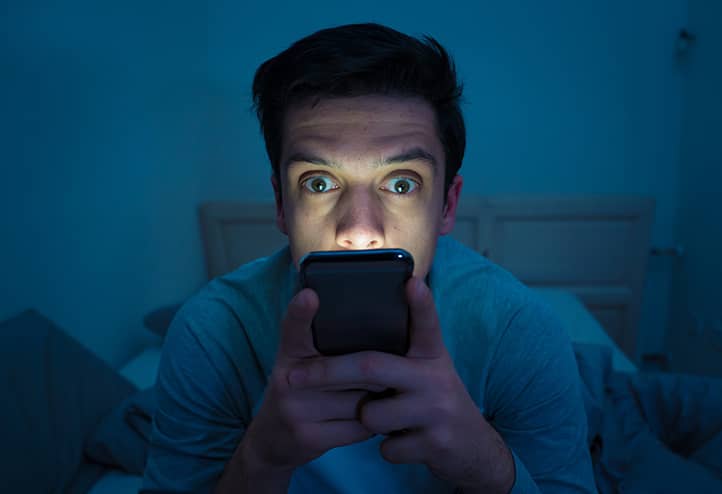
Conclusions
Digital detox is not just a temporary restriction on screen time but a path to deep changes that positively impact all aspects of life. Its results become visible after just a few days of mindful self-work. One of the key effects is the improvement in mental and physical health: constant tension disappears, anxiety decreases, and the ability to focus on important tasks significantly increases.
Digital detox also contributes to better sleep quality. Refraining from gadgets before bedtime allows the brain to enter rest mode, which in turn helps you fall asleep faster and wake up refreshed. Additionally, people report increased productivity, as the absence of constant distractions allows for better focus on tasks, enabling faster and more efficient goal achievement. Improved mood and a sense of satisfaction with life are natural consequences of directing time and energy toward truly important things: live communication, hobbies, sports, or walks.
However, the key is not to stop. A digital detox opens the door to a new lifestyle, but continuing to adhere to the established rules and habits is crucial for ensuring long-term results. Therefore, it’s important not only to complete the process but also to make it a part of your routine.
If you feel that gadgets have started to take too important a place in your life, don’t delay the changes. Start your digital detox today! It’s much easier than it seems. Begin with simple steps: turn off notifications, designate one hour a day without screens, or set aside time for a favorite activity that’s not related to technology. Over time, these small changes will lead to significant results and help you find harmony between gadget use and real life.
Digital detox is not about restrictions but about freedom: freedom from addiction, stress, and overload. And this freedom begins with your decision to take the first step. So, don’t wait for a special moment, because the best time to make changes is now!
Recommended Reading
- “Digital Minimalism: Choosing a Focused Life in a Noisy World” by Cal Newport. This book offers a philosophy of technology use that helps focus on what’s important, reduce digital noise, and improve life quality.
- “The Shallows: What the Internet Is Doing to Our Brains” by Nicholas Carr. The book explores how the internet affects our brains, diminishing our ability for deep thinking and concentration, and calls for more mindful use of digital technologies.
- “Digital Detox: The Ultimate Guide to Beating Technology Addiction, Cultivating Mindfulness, and Enjoying More Creativity, Inspiration, and Balance in Life” by Damon Zahariades. This book explains why focusing is so difficult, how phones disrupt your sleep, the reasons for stress, why your social life is suffering, how gadgets cause physical pain, and what character traits make you more vulnerable to phone and internet addiction.
- “How to Break Up with Your Phone: The 30-Day Plan to Take Back Your Life” by Catherine Price. This book offers a practical 30-day plan for reducing digital clutter and smartphone addiction, restoring control over your time and attention, increasing productivity, and improving your quality of life.
- “The Joy of Missing Out: Finding Balance in a Wired World” by Christina Crook. This book explores the concept of “joy of missing out” and shows how disconnecting from constant connectivity can lead to a more balanced and fulfilling life.
- “Reclaiming Conversation: The Power of Talk in a Digital Age” by Sherry Turkle. This book examines how digital technologies affect our communication and emphasizes the importance of face-to-face conversations for building deep relationships and empathy.
- “The Tech-Wise Family: Everyday Steps for Putting Technology in Its Proper Place” by Andy Crouch. This book offers practical advice for families seeking to set healthy boundaries around technology use and create a supportive environment for growth.
- “Bored and Brilliant: How Spacing Out Can Unlock Your Most Productive and Creative Self” by Manoush Zomorodi. This book explores how boredom and disconnecting from digital devices can stimulate creativity and enhance productivity.
- “Irresistible: The Rise of Addictive Technology and the Business of Keeping Us Hooked” by Adam Alter. This book reveals how tech companies create addictive products and offers strategies for regaining control over your attention.
